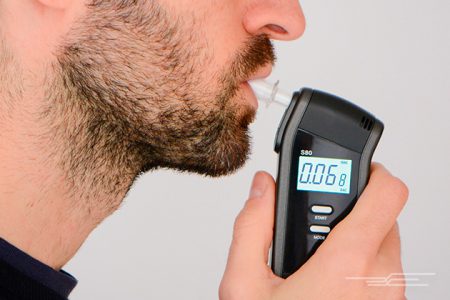Massachusetts Breathalyzer Challenged in Court
- Criminal Defense, Uncategorized
- Comments Off on Massachusetts Breathalyzer Challenged in Court

Recently there has been much discussion in the news about the admissibility of breathalyzer evidence in Massachusetts criminal trials. Attorney Irvin Rakhlin has been part of a lead group of attorneys that has been working for over a year on this particular breathalyzer litigation. Attorney Rakhlin and the other attorneys have worked tirelessly to convince the judicial system that this so-called evidence is actually nothing more than an unreliable guess at a person’s blood alcohol level.
How does the breathalyzer machine work?
To understand the problems with the breathalyzer test, one must first understand how the machine works. In Massachusetts both the local and state police agencies use a machine call the Draeger Alco Test 9510, which is produced by a company in Germany. This machine has been in use in Massachusetts since 2012. Prior to 2012, the Commonwealth used a machine called the Draeger Alco Test 7110 which is no longer in use. That machine was also subject to criticism due to issues with its reliability. Partly in response to that criticism, Massachusetts purchased the newer version of the machine with the model number 9510. The biggest advantage of this new machine was purported to be its ability to screen out interferent substances.
The way in which the Draeger Alco Test 9510 is supposed to work is that an individual suspected of drunk driving is given the opportunity to either take or decline the test. If the individual chooses to take the test, which is a determination that should be made on a case-by-case basis, the operator of the machine is supposed to observe the subject for 15 minutes prior to the test. The purpose of this observation time is to make sure that the individual does not ingest any substances, does not burp or regurgitate, and does not place anything in their mouth that may influence the test result. After this time has passed the subject is then asked to blow into a tube on two occasions in order to produce two breath samples. Each sample is then subjected to two distinct measurements. The first measurement, which is required by the laws of our Commonwealth, is an infrared reading.
The second measurement is an electro–chemical fuel cell reading. The machine is supposed to be pre-programmed to check that two distinct measurements are within a certain tolerance range of each other. However, what has been discovered is that the specified tolerance range was not appropriately programmed into the machine. This means that some tests were done under a system that allowed the potential of a greater degree of interfering substances, while others were more strict and allowed less of a potential of interfering substances. The reason why interferent substances must be kept out of the test is to prevent the possibility of artificially raising the citizen’s breath test result, thus causing a license suspension and production of damaging evidence in a criminal case.
Importance of exact results
The presence of a breathalyzer test result of greater than 0.08% is per se evidence of guilt under Massachusetts law. This is why these measurements must be exact rather than just be estimates. When a jury is instructed that they must find a person guilty if he or she had a blood alcohol level over 0.08%, it creates a system where variables which are unintended and unaccounted for cannot be allowed to influence the most critical piece of evidence in a case. Furthermore, in order to ensure that the machines are all functioning properly and that each citizen is subjected to a machine that is appropriately calibrated and maintained, it is incumbent on the Office of Alcohol Testing, which is the agency that is assigned to monitor and maintain these machines, to make sure that proper protocols and procedures are in place and that they ensure a scientific degree of standardization.
Throughout the course of the recent litigation, in which hundreds of defendants were represented by a few select lead counsel, including Attorney Rakhlin, it was discovered that the office of alcohol testing did not, in fact, maintain any written protocols as to the calibration of these machines from 2012 until September of 2014. This means that during this time period, machines were operating in the field without any assurance that they were appropriately calibrated. Furthermore, because the calibration certificate on the machine is good for one year, that means that tests all the way up until September 14th of 2015 could have occurred on machines which were not appropriately calibrated. For that reason, Judge Brennan ruled in his decision regarding the consolidated cases that all tests on machines calibrated prior to September 14th of 2014 are to be excluded as evidence in criminal trials.
The Commonwealth is entitled to an opportunity to try to salvage this evidence, but the reality is that the Judge’s decision dealt a crushing blow to that particular piece of evidence in that circumstance. If you had a case involving a breathalyzer between 2012 and 2015, you need an experienced defense attorney like Attorney Rakhlin to go back and find out if your breathalyzer results were inappropriately used as evidence against you. Furthermore, there are other types of challenges to the scientific reliability of the breathalyzer machine that only a knowledgeable and well-trained drunk driving defense attorney can pursue on your behalf. If you have questions about your Operating Under the Influence case, or want someone to review your old case, please do not hesitate to call Attorney Rakhlin today at 617 564-0466 for a free and confidential consultation.
